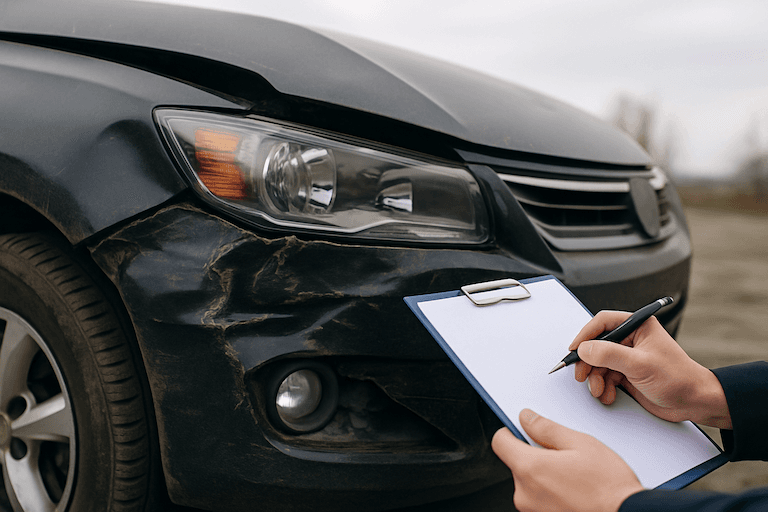Why Some Shops Use Aftermarket or Used Parts (And When It's Totally Fine)

If you've ever looked at a car repair estimate closely, whether from a shop, insurer, or CarAid, you may have noticed something unexpected in the parts section:
- •OEM
- •Aftermarket
- •LKQ or Used
What do these mean?
And more importantly, is it safe to let a shop repair your car with parts that didn't come straight from the manufacturer?
Let's break it down.
What Do OEM, Aftermarket, and Used Mean?
OEM (Original Equipment Manufacturer)
These are parts made by your car's manufacturer (or an approved supplier). They're the same parts your car had when it rolled off the assembly line.
Best fit, best quality but also the most expensive.
Aftermarket Parts
These are made by third-party companies, not your car's original manufacturer. They're designed to fit and function similarly to OEM parts, but often at a lower cost.
Think of it like buying a certified phone charger that's not made by Apple or Samsung.
Used or LKQ (Like Kind and Quality)
These are recycled OEM parts taken from salvage vehicles. They might come from the same make/model/year, but were previously used. They can be in good condition, but may have some wear and tear.
Note: CarAid estimates currently focus on OEM and aftermarket part pricing, not used parts. If your shop uses LKQ components, the final cost may be even lower than our estimate.
Why Shops and Insurers Use Aftermarket or Used Parts
It's all about cost-efficiency and availability.
Insurers want to lower claim costs
Insurance companies may require shops to use aftermarket or used parts when:
- •OEM parts are expensive
- •Equivalent alternatives exist
- •The car isn't brand new
Shops want to offer options
Good shops aren't trying to "cheap, they're giving you choices:
Want OEM?
No problem, but your insurer might not cover it.
Happy with aftermarket?
You'll save money and likely get the same result.
Open to used?
You might fix a $1,200 repair for $600.
When It's Totally Fine to Use Non-OEM Parts
In many cases, you won't notice a difference and your wallet will thank you.
Aftermarket or used parts are usually fine when:
- •
You're fixing older or high-mileage vehicles
- •
The part is cosmetic (e.g. bumper, fender, mirror)
- •
You're not leasing the car
- •
You're not worried about resale value or manufacturer warranty
When You Should Insist on OEM
There are cases where OEM matters more:
- ⚠️
Safety systems: Airbags, sensors, ADAS components
- ⚠️
Structural parts: Frame or crumple zones
- ⚠️
Luxury or newer vehicles: To preserve value or warranty
- ⚠️
Lease agreements: Some leasing companies require OEM-only parts
If you're ever unsure, ask the shop or adjuster why they chose a part and whether it affects safety or warranty.
What Parts Does CarAid Use in Estimates?
CarAid provides real-world repair estimates based on a mix of:
- •
OEM pricing (for benchmark accuracy)
- •
Aftermarket equivalents (when commonly used)
- •
Labor, paint, and local rates
We'll often include notes like:
"This part is frequently replaced with aftermarket or used equivalents in repairs."
That way, you can compare apples to apples or request OEM pricing if it matters to you.
Final Thoughts: It"s Your Car. You Choose.
When it comes to car repairs, you’re in control.
If a shop or insurer is using non-OEM parts, it doesn’t automatically mean lower quality but you deserve to know the difference and make the call.
At CarAid, we’re here to help you:
- ✓Understand your estimate
- ✓Know your options
- ✓Avoid getting overcharged
- ✓Notes about part quality and alternatives
Got damage? Upload your photos now and get your free estimate.
Get Your Free EstimateCarAid Team
Car repair experts

